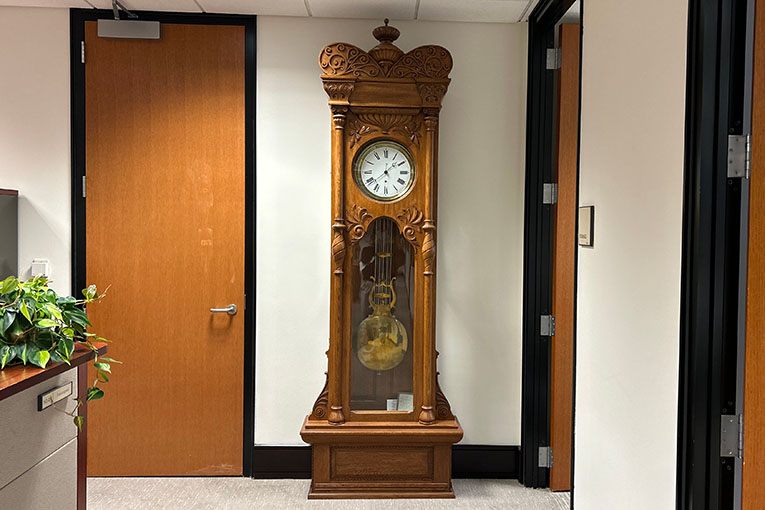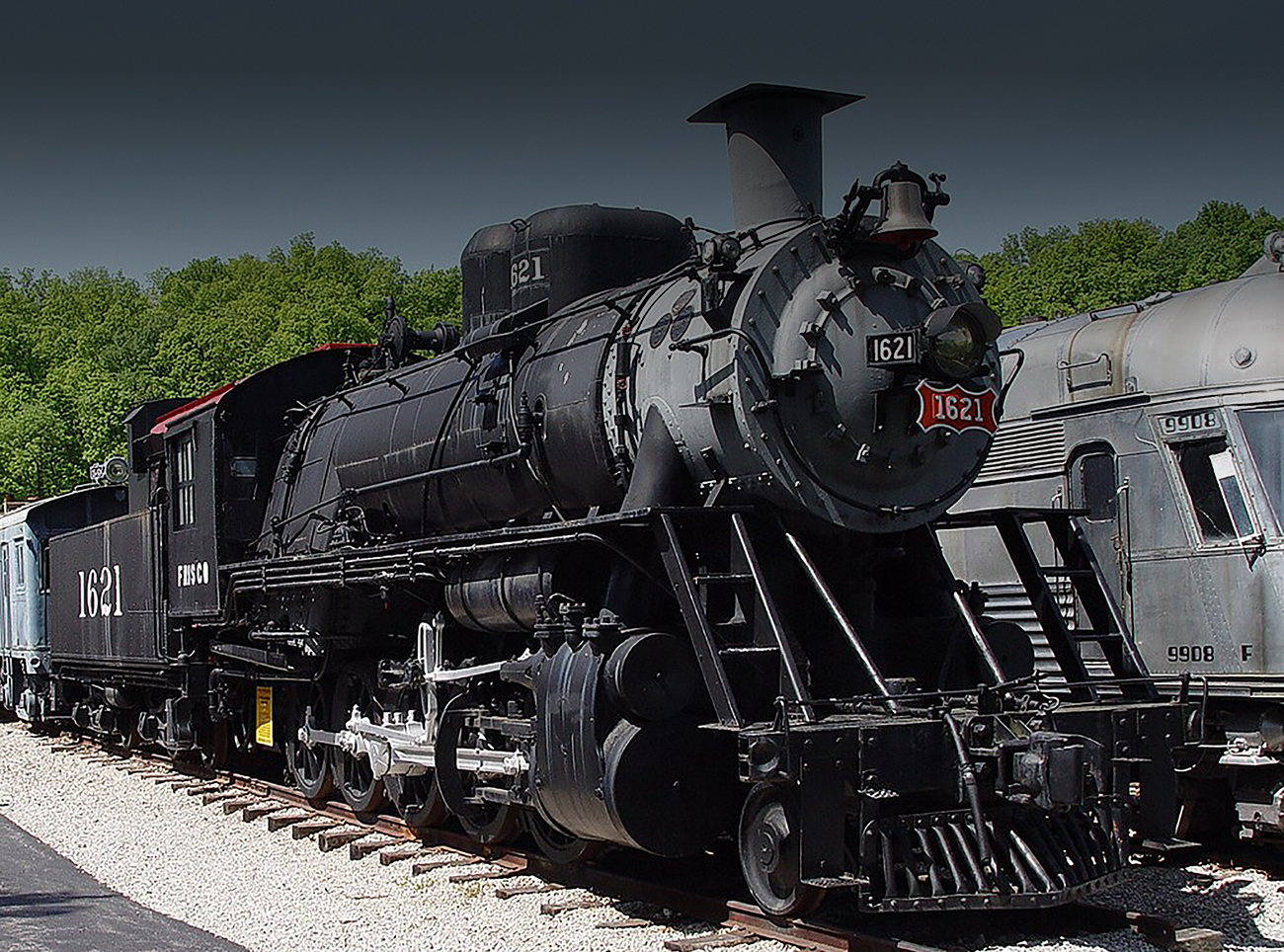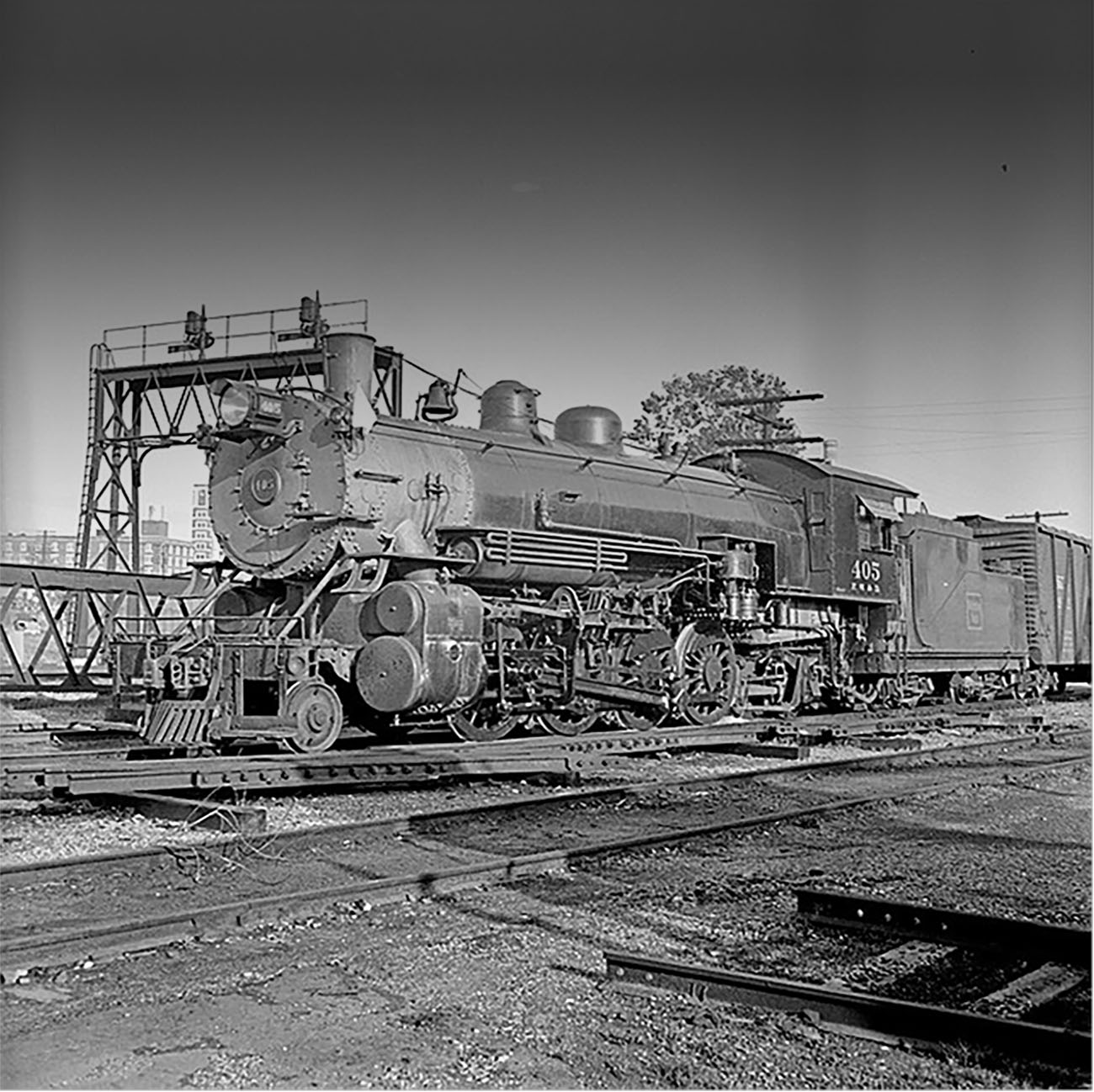
Explore BNSF’s historic clock collection: A glimpse into railroad history
By EUNICE ARCHILA
Staff Writer
Before 1896, providing accurate time to railroaders was challenging. To address this issue, Atchison, Topeka, and Santa Fe Railway Company (ATSF or Santa Fe) President E.P. Ripley appointed H.S. Montgomery as general watch and clock inspector. Montgomery mandated that conductors, locomotive engineers, yardmasters, assistant yardmasters, switch engineers and foremen carry a standard watch that had been examined and approved for service.
All Santa Fe employees needed access to standard time, so Montgomery placed clocks at multiple locations across each division.
Today, BNSF still has more than 200 historic clocks from its predecessor rail lines.
The clocks are many distinctive styles and sizes. Most are made of oak, and their height ranges from 16 to 103 inches. They were hung and displayed in train stations, offices and even ships. Here’s a look at a few notable examples.

Precision Clock - Seth Thomas
By 1904, Montgomery acquired this Precision Clock made by Seth Thomas. The clock was designed to protect against interruptions of the daily time signals sent by Western Union. It could automatically update the time in 10 states through telegraph wires.
Its cast-iron frame, which acts as a shield against ordinary magnetic disturbances, rests upon leveling screws. The weights fall entirely outside the case, free from any interruption, and fall close to the case in two polished brass tubes. The pendulum weighs more than 30 pounds and has a gravity escapement designed to run for eight days with one winding.
Due to the glass and oak headpiece, every part of the clock can be inspected without disturbing it. Very few of these clocks were produced -- no more than a dozen – with most sold to observatories. One can be found at the U.S. Naval Observatory in Washington, D.C.
This clock was in Topeka, Kansas, in the General Watch and Clock Inspector’s Office until it closed in 1987. It was then installed at Santa Fe’s headquarters in Chicago, Illinois, and became an exhibit at the BNSF Visitor Gallery in Fort Worth, Texas in 1999.

Northern Pacific floor clock – maker unknown
This beautiful crown top standing clock carved from oak was made between 1880-1890. With French origins, this clock was in the Northern Pacific Railway (NP) headquarters in Saint Paul, Minnesota. In 1901 the clock was relocated to Livingston, Montana. Then in 1918, it was sent to Logan Depot in Montana before making it back to the Saint Paul offices after it was refinished.

Ship’s Bell – Chelsea Clock Company
This brass crafted clock was used on the S.S. North Land, which was part of the fleet that legendary Great Northern Railway (GN) leader James. J. Hill commissioned for the Northern Steamship Company. This company operated on the Great Lakes, providing a freight and passenger connection for his railroad from Duluth, Minnesota to Buffalo, New York.

These fascinating artifacts from BNSF predecessor history are a beautiful reminder of how important accuracy and timekeeping have always been in the railroading world.

E. Ingraham Company banjo clock
The E. Ingraham Company was a noted clockmaker from 1831 to 1956. They sold clocks in a broad range of designs, including the popular “banjo” style shown here. This clock dates from around 1915.
DID YOU KNOW?
Before the advent of railways, time was a localized concept, varying from town to town based on the position of the sun or their own mechanical clocks. This lack of standardization posed significant challenges for coordinating train schedules and ensuring safe travel.
The railroad industry recognized the need for a more consistent and accurate timekeeping system. On November 18, 1883, at noon the railroads of the United States and Canada instituted standard time zones. By dividing the country into four distinct time zones, railroads could standardize schedules and improve the safety and efficiency of train operations.
However, it wasn’t an easy transition, with many towns still observing their own local clocks and having a railway clock as well. The U.S. government intervened by passing the Standard Time Act on March 19, 1918. This act also created Daylight Saving Time.
Watch this video to learn more.


